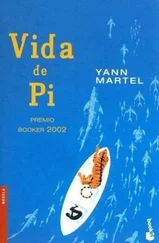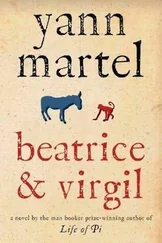He perks up. It always goes like this. She talks and talks and talks, and then suddenly he is hooked, like a fish in a biblical story. What did she see?
“I saw that the miracle of Jesus walking on the water means little when taken at face value. However, when it is taken as saying one thing but implying another — in other words, as allegory —then the miracle opens up. Swimming is a modern invention — people at the time of Jesus could not swim. If they fell into deep water, they sank and they drowned — that is the literal truth. But if we think of water as the experience of life, it is also the religious truth. Men and women are weak, and in their weakness they sink. Jesus does not sink. A man drowning in water naturally looks up. What does he see? While he is being engulfed by choking darkness, he sees above him the clear light and pure air of salvation. He sees Jesus, who stands above those struggling in weakness, offering them redemption. This explains Peter’s hapless performance on the water: He is only human, and therefore he begins to sink. Read so, as an allegory about our weakness and Jesus’ purity and the salvation that he offers, the miracle takes on a whole new meaning.
“Now, I asked myself, why would this miracle demand an allegorical reading but not the others? Would the miracles that benefit the human body gain from a similar reading? I had never thought of that. Poor stupid woman that I am, I had always taken the body miracles of Jesus as factual truth. In my mind Jesus really did cure leprosy, blindness, and other ailments and infirmities, and he really did feed the thousands. But is the Lord to be reduced to an itinerant doctor and a peddler of buns? I don’t think so. The miracles that benefit the human body must also mean something greater.”
“What?” Eusebio asks pliantly.
“Well, what else could they be but symbols of the Everlasting Kingdom? Each miraculous cure of Jesus is a glimpse of the ultimate place that is ours, if we have faith. Have faith, and you will be cured of your mortality, you will be fed forever. Do you understand the import of what I am saying?” Eusebio ventures a nod. Maria’s voice is warm, buttery, comforting. If only he could eat it. He peeks at the clock. “The miracle of Jesus walking on the water is a guide to how we must read Scripture as a whole. The Gospels are lesser, their message weakened, if we read them as though they are reports by four journalists. But if we understand them as written in a language of metaphors and symbols, then they open up with moral depth and truth. That is the language used by Jesus himself, is it not? How did he teach the people?”
“It says in the Gospels: ‘He did not speak to them except in parables.’ ”
“That’s right. The parable of the lost sheep, of the mustard seed, of the fig tree, of the yeast, of the sower, of the prodigal son, and so on. So many parables.”
Mutton with mustard sauce, with stewed figs and a glass of wine — so many edible parables, thinks Eusebio.
“A parable is an allegory in the form of a simple story. It is a suitcase that we must open and unpack to see its contents. And the single key that unlocks these suitcases, that opens them wide, is allegory.
“Finally, only one miracle stands true and literal, the pillar of our faith: his resurrection. Once that is clear, we can start making sense of all the stories told by Jesus and told about him. That is Christianity at heart: a single miracle surrounded and sustained by stories, like an island surrounded by the sea.”
Eusebio coughs a little. “You haven’t been sharing these insights with Father Cecilio, have you?”
Father Cecilio is their local priest — and the subject of much eye-rolling on Maria’s part. In her presence the poor man always looks like the chicken in the coop that hasn’t laid enough eggs.
“What, and have us excommunicated? That dimwit is the very hammer of literalism that insults my faith. He’s as dumb as an ox.”
“But he means well,” Eusebio suggests soothingly.
“As does an ox.”
“That’s all very interesting, what you’ve been saying.”
“I’m not finished. I was searching, if you remember? There’s a problem.”
“Yes, and you found a solution.”
“Oh, how my heart beats! I’ll drink now, if you sanitize that glass.”
Maria bends down and produces from the bag a bottle of red wine, which she places on the desk. Eusebio cracks a wide smile. “Maria, bless you!” He hurries to open the bottle. While it breathes, he washes the glass thoroughly.
“I don’t have another glass,” he says. “You drink from it and I’ll drink from the bottle.”
“That’s unseemly. We’ll share the glass.”
“All right.” He tips some of the elixir into the glass. It glows like a firefly. He licks his lips at the prospect of pouring it down his throat, but offers the glass to his wife. “You first, my angel.”
Maria takes a small, thoughtful sip. She closes her eyes as she considers its distilled effect on her. She purrs and opens her eyes. “It’s a good one.”
She passes him the glass. He takes a larger sip, grunts with pleasure, empties the glass in one go. “Oh! Indeed. Just a little more.” He half-fills the glass, perhaps a little more than half.
Maria has another sip. “That’ll be enough for me,” she says. “Happy New Year.”
“Sorry?”
“What’s the point of looking at a clock if you don’t notice the time? Look at the two hands. It’s midnight. We’re now in 1939.”
“You’re right. Happy New Year to you, my angel. May this year be a good one.”
He finishes off the glass and sits down again. Now it is his turn to glow like a firefly, and his mind flits about inconsequentially as his wife starts up again.
“Why would Jesus speak in parables? Why would he both tell stories and let himself be presented through stories? Why would Truth use the tools of fiction? Stories full of metaphors are by writers who play the language like a mandolin for our entertainment, novelists, poets, playwrights, and other crafters of inventions . Meanwhile, isn’t it extraordinary that there are no significant historical accounts of Jesus of Nazareth? A minor government official from Lisbon comes to Bragança, a tight little man with nothing to say, and it’s all over the papers, which end up in archives for the rest of time. Or you, your work, Eusebio. Someone does that ordinary thing of dying — and you write a report, you immortalize that ordinary mortal. Meanwhile, the Son of God comes to town, he travels around, he meets anyone and everyone, he impresses mightily, he is murdered— and no one writes about it? Of this great divine comet hitting the earth, the only impact is a swirl of oral tales ?
“There are hundreds of documents from pagan authors from the first century of our Christian era. Jesus is not mentioned in a single one. No contemporary Roman figure — no official, no general, no administrator, no historian, no philosopher, no poet, no scientist, no merchant, no writer of any sort — mentions him. Not the least reference to him is to be found on any public inscription or in any surviving private correspondence. He left behind no birth record, no trial report, no death certificate. A century after his death — one hundred years! — there are only two pagan references to Jesus, one from Pliny the Younger, a Roman senator and writer, the other from Tacitus, a Roman historian. A letter and a few pages — that’s all from the zealous bureaucrats and the proud administrators of an empire whose next religion was founded on Jesus, whose capital would become the capital of his cult. The pagans didn’t notice the man who would transform them from Romans into Christians. That seems as unlikely as the French not noticing the French Revolution.
Читать дальше












